DNA Quantitation with the Open Colorimeter Plus
In this post we describe how to perform DNA Quantitation with a commercial dsDNA fluorescence kit and our new Open Colorimeter Plus.

We are currently in the process of developing a new open hardware product which we are calling the Open Colorimeter Plus. We are going to be documenting the development and testing process through this and upcoming posts. This new science instrument expands on our current Open Colorimeter. In addition to colorimetric assays, users will also be able to perform fluorescence and light-scattering (e.g. turbidity) measurements. We are also making it very easy to upgrade from the current Open Colorimeter to the Plus version. More to come on that in a future post!

We have already shared preliminary turbidity measurements with the Open Colorimeter Plus. In this post we are measuring fluorescence using a commercially available DNA quantitation kit.
We decided to start with using a broad range DNA quantitation kit. There are several on the market but we selected the AccuGreen™ Broad Range dsDNA Quantitation Kit. This is an $80 kit and can be used for 100 assays ($0.80/assay). The assay covers a linear range of 2-1000 ng dsDNA and is quick & easy to use. For this test the peak excitation is at 500nm and the peak emission is at 530nm.
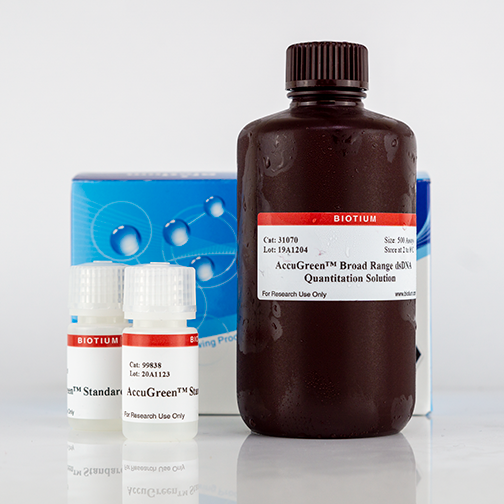
Open Colorimeter Plus - Hardware Configuration

- Sample holder: Right-angle (R/A) 0.2 mL PCR tube holder
- Excitation LED: 495nm blue LED
- Emission Light Sensor: Adafruit TSL2591 High Dynamic Range Digital Light Sensor fitted with black acrylic cover
- Control Light Sensor: Adafruit BH1750 light sensor (not currently implemented)
- Firmware: prototype firmware which displays the raw sensor value and where the TSL2591 light sensor is set for maximum sensitivity (gain=max, integration time=600ms)
Optional filters
- Amber acrylic filter: 6mm x 6mm, made in-house
- 500 nm Long Pass Filter: Edmund Optics, 6mm x 6mm, Part # 15200
Method
The kit includes a 0 ng/µL dsDNA Standard #1 and a 100 ng/µL dsDNA Standard #2. We used these two standards to prepare a dilution series of 20, 40, 60 and 80 ng/µL dsDNA. The next steps basically followed the manufacturers instructions.
Additional materials needed are 0.2 mL PCR tubes, set of micropipettes and tips.
- Remove materials from refrigerated storage and warm to room temperature
- Pipette 190 µL of AccuGreen into six labelled 0.2mL PCR tubes
- Add 10 µL of DNA standard (either 0, 20, 40, 60, 80 or 100 ng/µL)
- Incubate at room temperature for at least 2 minutes
- Make sure the Open Colorimeter Plus is set-up in the configuration described above with the R/A tube holder, 495nm LED and programmed with firmware for measuring fluorescence
- If using a 6mm X 6mm optical filter make sure to insert this before mounting the light sensor
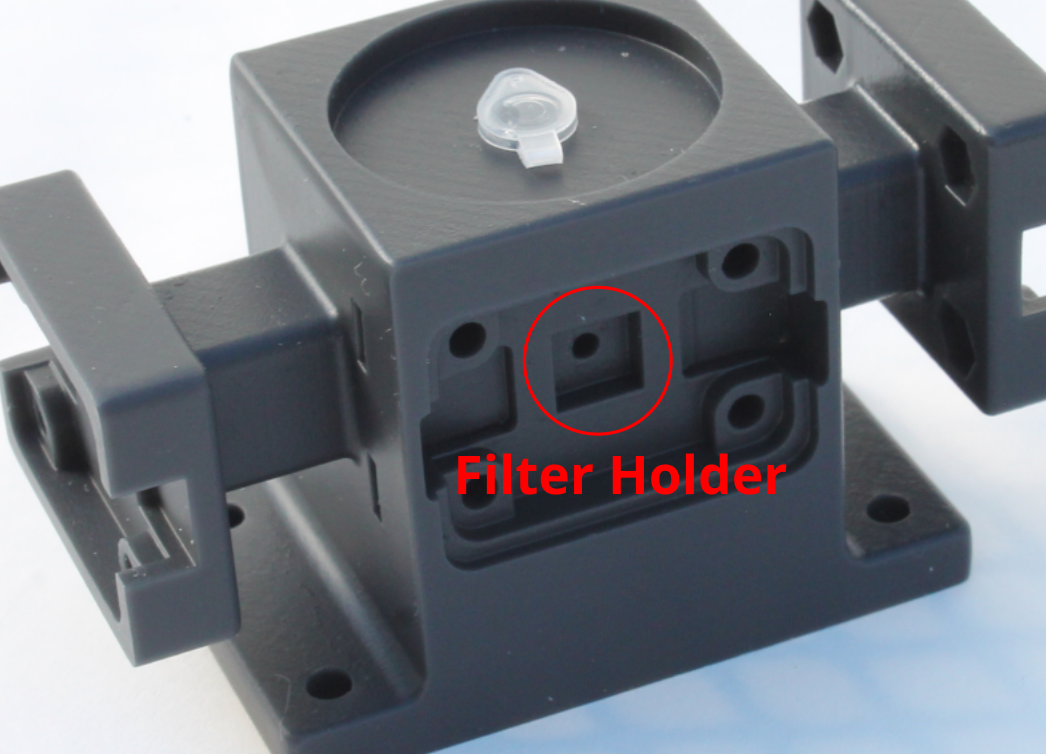
- Turn on the Open Colorimeter - it should display the raw sensor values
- Place the first 0 ng/µL sample in the tube holder as shown in the image below

- Place the black cap over the tube and record the raw sensor value
- Repeat for all samples, recording the raw sensor value for each sample


Results
Before quantifying fluorescence with the Open Colorimeter Plus, we also verified fluorescence by viewing the samples on a blue LED transilluminator. We used our open hardware LED transilluminator to image the samples.
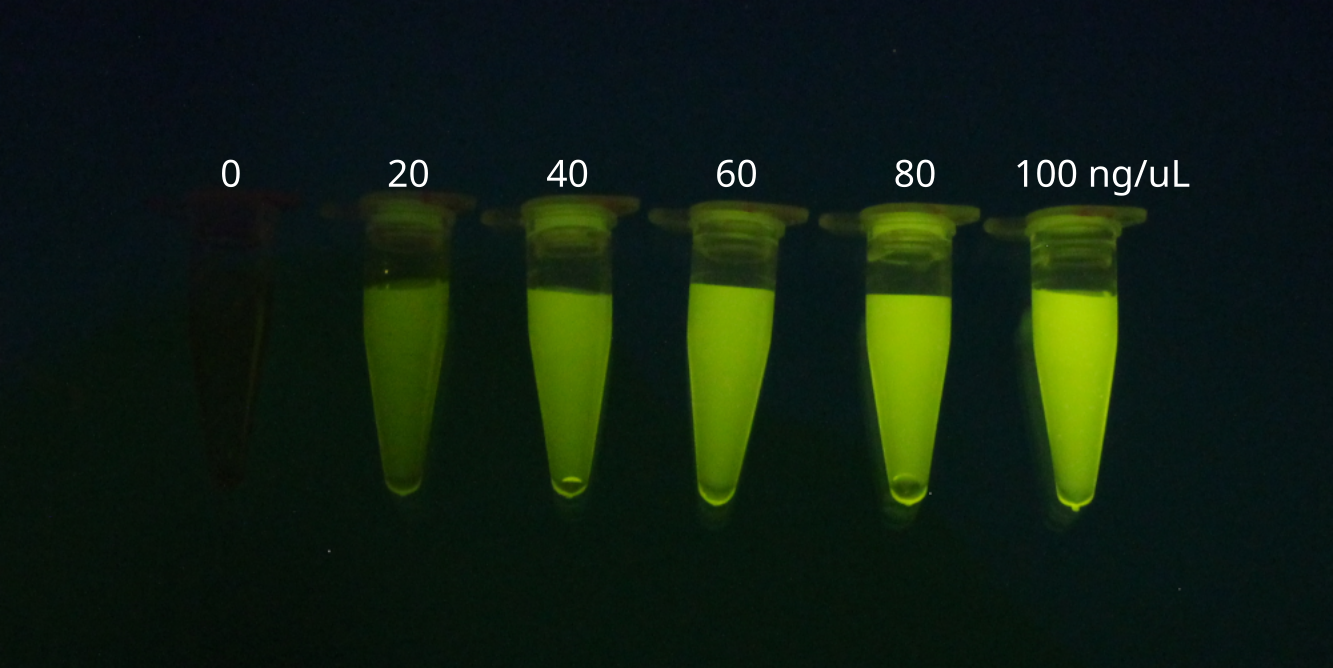
We are expecting a linear relationship between DNA concentration and fluorescence (raw sensor reading). We measured the samples without any filter (blue data points), with a 500 nm long pass filter (yellow data points) and with a homemade amber acrylic filter (red data points).
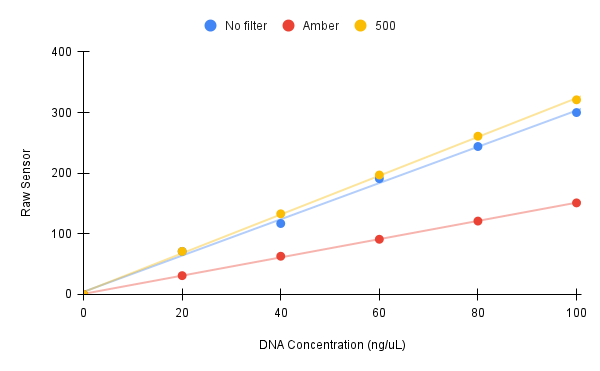
- As you can see, there is a clear linear relationship between DNA concentration and light intensity (raw sensor reading with background reading subtracted)
- Using the 500 nm long-pass filter gave slightly higher readings than with no filter, possibly due to light refraction bending more light towards the sensor
- The amber filter gave lower background readings (not shown), but also reduced overall sensitivity compared to no filter and 500 nm long-pass filter readings
- We could readily detect dsDNA at the lowest range tested (20 ng/µL)
This was a preliminary experiment to demonstrate using an open hardware instrument for DNA quantitation. Below are some of our next development steps for the Open Colorimeter Plus!
- We will be implementing the second light sensor to control for differences in LED light intensity between instruments;
- We will be updating and releasing the open source firmware to include measurements for the Open Colorimeter Plus





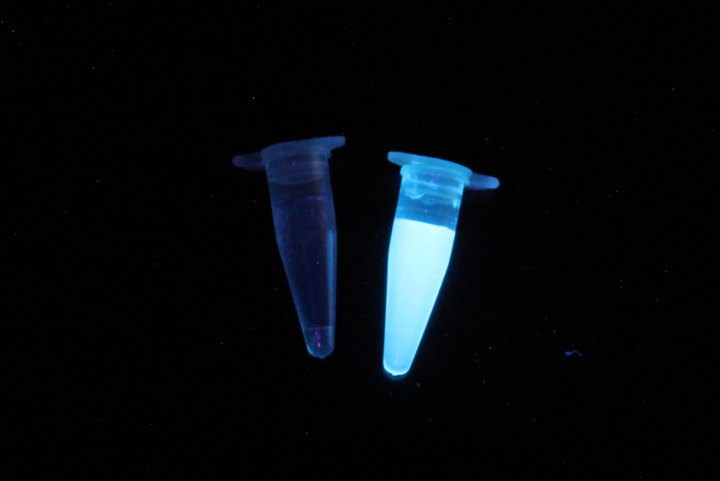
Comments ()